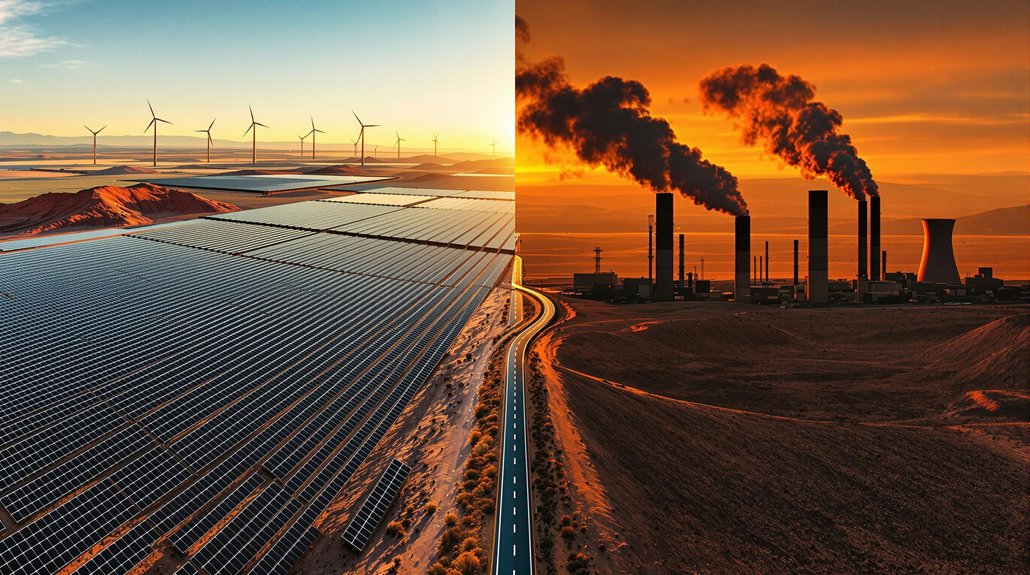America’s clean energy sector sits at a crossroads. Growing impressively with 220 GW of solar capacity and 406,000 new jobs, it’s still playing catch-up to China’s market dominance. The U.S. has climbed from 14th to 3rd in global solar production—not bad, but not enough. Grid limitations, bureaucratic permitting, and local opposition create real roadblocks. Federal leadership matters, but so do those pesky state policies. The green energy battle isn’t just about climate; it’s about who’ll control tomorrow’s economy.
As the United States stands at a green energy crossroads, the nation’s renewable sector is experiencing unprecedented growth. Solar capacity hit 220 GW in 2024, powering 7% of American electricity needs. Wind isn’t far behind with 153 GW. Battery storage? Nearly doubled. These aren’t small numbers, folks.
Remember when America couldn’t compete with China in clean energy? Those days are fading. The U.S. has climbed from 14th to 3rd in global solar panel production since 2017. Not bad for a country that let its manufacturing muscle atrophy for decades. Domestic solar module manufacturing surpassed 50 GW in 2024, and silicon cell production resumed after a five-year hiatus. About time.
America’s solar comeback is real – from 14th to 3rd globally while reviving manufacturing we foolishly abandoned.
The economic impact is staggering. Over 406,000 new clean energy jobs announced since August 2022. A whopping $422 billion invested across 48 states and Puerto Rico. The Inflation Reduction Act kicked this renaissance into overdrive, spurring investments that seemed impossible just years ago. This growth mirrors global trends, where the sector has created over 10 million jobs worldwide, transforming rural and urban economies alike.
But let’s not pop the champagne yet. Serious roadblocks remain. The grid is ancient and congested. Permitting new projects is a bureaucratic nightmare. High interest rates are making financing a headache. And those interconnection queues? They’re longer than the line for the latest iPhone. As if that wasn’t enough, local opposition to clean energy projects has intensified, with 15% of U.S. counties now having clean energy bans in place.
Meanwhile, AI and data centers are gulping electricity like college students at happy hour. Tech companies have ambitious decarbonization goals, but meeting that demand requires massive renewable expansion. Industry leaders are increasingly turning to independent power production models to meet their sustainability targets.
China still dominates the market. They recognized the potential decades ago while America was hitting the snooze button on clean energy. Now we’re playing catch-up.
The policy landscape is shifting too. Federal leadership has been vital, but state and local policies could become more important. And tariffs on solar and batteries aim to protect reshored industry.
America’s clean energy sector stands at a pivotal moment. The growth is real. The jobs are real. The challenge to China’s dominance is real. But so are the obstacles. The question isn’t if America can compete in clean energy—it’s whether we have the patience to finish what we’ve started.








